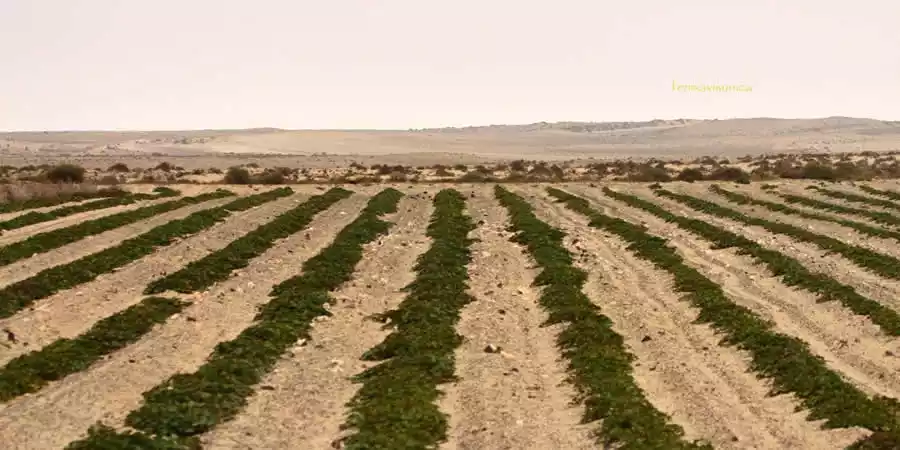
El Jable is a large area on the island of Lanzarote, located between the north coast of Caleta de Famara and the south coast of Playa Honda and Los Pocillos. What makes this region unique and distinctive is the presence of a layer of organically sourced sand known as "jable", which is the local word for the yellowish sand commonly found on the island's beaches. This silky sandy soil is one of the most outstanding features of the region and is of great interest to both visitors and locals.
The jables (sands) cover the clay soil. After the plowing soil, holes are opened until the clay is reached, manure is placed and guano is next to the seed, finally covering itself with the same Jable. Sweet potatoes are grown this way and, to a lesser extent, pumpkins, cabbage, tomatoes, watermelons, and other crops. This type of cultivation can be observed in other islands of Macaronesia, such as Porto Santo (Madeira) or Salt (Cape Verde).
To fight against the constant winds that blow from the NE the cultivation plots are fenced with fences, generally made with rye straw. The bards are arranged perpendicularly and parallel to the prevailing winds. Another of its functions is that stop the wind sand because if not, the aerial parts of the plants of the sand would not only be hit but by acting as an obstacle they would be buried.
The manifest aridity of Lanzarote is wiped clean with the use of the jables since these Organic sands conserve and condense moisture. Likewise favor the growth and development of plants by acting as thermal insulation. The characteristics of the jables allow Surprisingly, the cultivation of water-demanding vegetables in a dry regime.
After knowing a time of heyday around the sixties, the jables have been affected by gradual abandonment. Today sweet potatoes and watermelons are planted in an extension of fewer than 400 hectares.
The origin of the word Jable is in French since sable is sand in French. Many authors confirm this origin by the almost coincidence of the word and the nationality of the conquerors of the island of Lanzarote, Jean de Bethencourt and Gadifer de La Salle, who were Normans. Some place names of the islands that tell us about sandy areas that still retain the original word: La Caleta del Risco de Los Sables, the Llano de los Sables,...